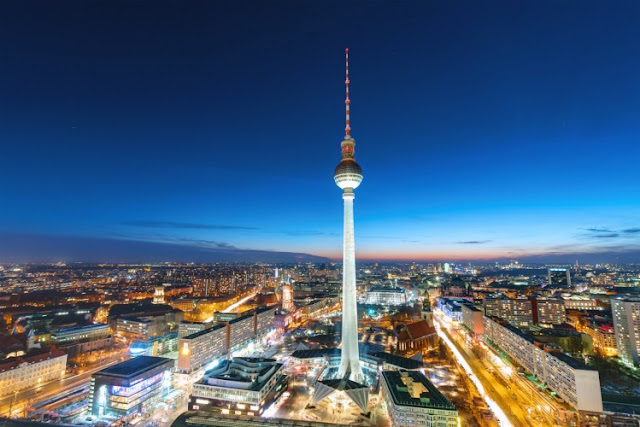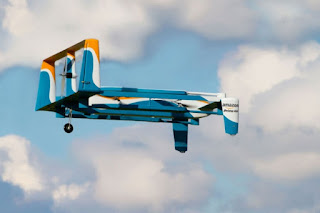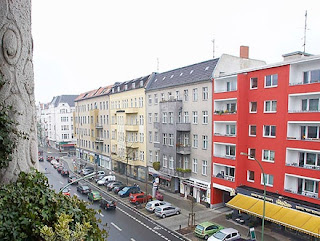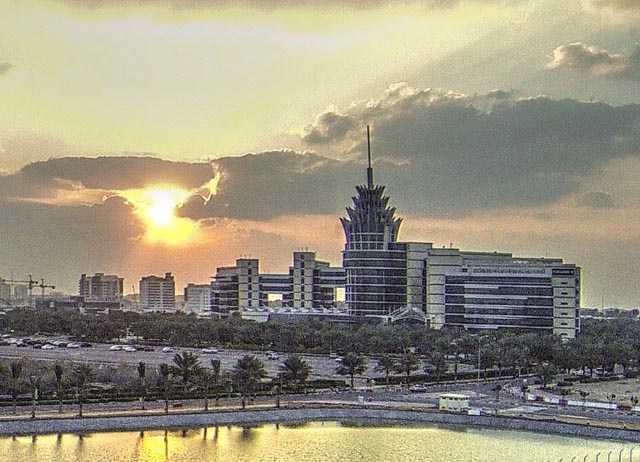TAG | led street lights
 |
| Berlin is undergoing a street lighting revolution, 5,500 LED street lights have already been deployed, while a further 2,500 are being fitted this year. |
An intelligent wireless lighting network has been installed in the Wilmersdorf district of Berlin. The street lights are able to adjust their brightness based on real-time human presence.
The intelligent lighting minimises energy waste and acts to lower light pollution by ensuring that streetlights do not burn at full capacity throughout the night when the streets are often deserted.
The sensor network is a major breakthrough in Berlin’s street lighting renovation efforts. 5,500 LED street lights have already been deployed, while a further 2,500 are being fitted this year.
The innovative street lighting approach was praised by Christian Gaebler, permanent secretary at Berlin’s Senate Department for Urban Development.
‘Residents were continuously dissatisfied with the state of the area,’ commented Christian Gaebler, permanent secretary at Berlin’s Senate Department for Urban Development and the Environment.
‘Now for the first time we are testing a technical innovation that hasn’t existed anywhere in Berlin before, in order to improve the environment,’ Gaebler concluded.
The new LEDs in combination with sensor lighting controllers are allowing Berlin to save up to 80 percent of the energy normally spent on street lighting, whilst cutting maintenance costs.
Smart cities and the internet of things firm Tvilight worked on the project in conjunction with Trilux.
The intelligent network is managed remotely via Tvilight CityManager software, which enables the street lights to be controlled on an individual and group level, whilst delivering a host of analytics such as energy savings reports, failure notifications and traffic heatmaps.
berlin lighting · berlin street lighting · intelligent lighting · LED street · led street lights · Novel Energy Lighting · smart street lights · wireless lighting network
EU pledges millions to tackle IoT security threat. PLUS: Reykjavik turns off street lights for better aurora view. AND: US speedway becomes first to go all LED. Lux Today October 18 2016
iot · iot security · led stadium lighting · led street lights · Novel Energy Lighting · smart led lighting · smart lighting
Smart traffic lights to ‘communicate’ with drivers to inform them when they are about to change. PLUS: Saudi scientists create ‘fastest li-fi luminaire’. AND: New building standard aims to protect the health of occupants.
intelligent cities · led lighting · led street lights · lifi · lifi traffic lights · Novel Energy Lighting · smart street lights · smart traffic lighting
 |
If Amazon’s drone plan becomes a reality then you might be seeing one dock on a street light near you soon. |
Amazon has just been granted a US patent that depicts drone docking stations as standalone structures that are constructed on top of streetlights, buildings and pylons.
It has been known for sometime that the company plans to use drones to deliver packages, but up until now the gritty detail of their proposal has remained something of a mystery.
Amazon hopes that the docking stations will act both as package handling facilities and as a final destination where drones are able to recharge and refuel. The stations would incorporate solar panels, security cameras, and even Wi-Fi.

Example of what an Amazon drone will look like. They may be docking on top of a streetlight near you.
The docking points would also be able to act as points of safety and shelter for drones during harsh weather.
The development of the streetlight safe havens in theory means that drones would be able to continuously hop from drop off point to drop off point, opening up, potentially, whole counties to the Amazon drone service.
It is also hoped that the docking stations will be able to offer navigational assistance, helping to guide the craft to the location of their drop-off.
The filing of the patent does not necessarily mean that the docking stations will get built, but it does allow us to see how Amazon are preparing for their future drone revolution, whenever it arrives.
amazon drone · drone docking station · led lighting · led street lights · Novel Energy Lighting · streetlight docking station
11
Dubai street lights with motion sensors are internet first
Comments off · Posted by admin in LED, LED Floodlights
A series of street lights in Dubai are pioneering the way for the internet-connected future of the smart city.
In one of the first applications of its type in the world, the luminaires are fitted with motion sensors which detect traffic movements and react accordingly. If there’s no vehicles, the lights remain at 25 per cent output, but if cars approach the output is ramped up to full output.
Additional sensors can be added to the street lights – located at the Silicon Oasis in Dubai – to collect and share information and data on the surrounding environment, such as pollution and weather conditions – or even relay CCTV, advertising messages and safety warnings.
Dubai Silicon Oasis Authority worked with telecoms provider du to integrate the streetlights into an Internet of Things network, where sensors are placed in everyday objects to become ‘smart’ and interact with their surroundings.
The smart building technologies include high-tech sensors in the DSOA headquarters which use du software to allow energy and cost saving through managing the electricity consumption and allowing automatic regulation of temperature throughout the headquarters.
Engineer Muammar Khaled Al Katheeri of the DSOA told Lux Review: ‘Through these initiatives – great and small – DSOA is proud to contribute to achieving the vision of His Highness Sheikh Mohammed bin Rashid Al Maktoum, Vice President and Prime Minister of the UAE and Ruler of Dubai, of making Dubai the smartest city in the world. We have launched several smart initiatives in DSO that went through Proof of Concepts testing ahead of large scale implementation such as DSO smart waste management that proved to be very successful for reducing waste collection cost and environmental footprint.’
‘We look forward to increasing our collaboration with du on the installation of more smart street lights and smart building technologies around DSO.’
Visit www.novelenergylighting.com to explore our range of LED streetlights
ge street light · internet of things · led street lights · led streetlights · motion sensors · Novel Energy Lighting · streetlighting
11
The man who’s making Britain’s councils look twice at their LED streetlighting specs
Comments off · Posted by admin in LED, LED Floodlights
‘LED streetlighting is being imposed on people and any negative feedback is being ignored’ – campaigner Simon Nicholas
Simon Nicholas insists he’s not ‘anti-LED’.
It’s a point worth making, as he has become famous in lighting circles for his one-man campaign against bad LED streetlighting.
‘I believe LED is the future of lighting,’ he says. ‘But it’s a sophisticated technology being used crudely because of a lack of expertise. There’s a lack of understanding of the wider issues and a lack of skills within many local authorities.’
‘In many cases it’s cheap and cheerful. It’s not even cheerful, it’s cheap and nasty. In fact it’s not even cheap, it’s expensive and nasty. And if residents complain, all they get back from their local authorities are cut-and-paste platitudes.’
Nicholas thinks taxpayers deserve better, so he has made it his business to get councils to look more carefully at how they procure and specify LED streetlighting – and he’s getting results.
Looking for answers
In a world of confusion and misinformation about LEDs, many lighting professionals dream of customers who are as well informed about lighting as Nicholas. It’s not often you hear members of the general public throwing around terms like spectral composition and luminaire lumens per circuit watt. But be careful what you wish for: Nicholas has been giving manufacturers and local authorities a pretty hard time about their products and practices.
Nicholas is not a lighting man by background. He’s a mechanical engineer who runs a couple of transport and property businesses, and until recently had no more than a passing interest in LED lighting.
But when his local council in Trafford, Greater Manchester tried to replace the streetlights in the conservation area where he lives with brighter lights on higher masts, he complained, and succeeded in getting changes made.
Then he got wind of Trafford’s plans to roll out LEDs, and began to examine their plans.
Since then, his campaign against what he sees as bad LED lighting – either because it’s poorly designed, bad value for money, foisted on people without consultation or potentially damaging to health – has become, in his words, ‘a hobby’.
He hit the headlines in 2013 when the Manchester Evening News quoted (or rather paraphrased) him as saying that LED lights might ‘damage brains’, and last year he appeared on the BBC’s Daily Politics to speak out against bad lighting.
In his spare time Nicholas devours academic papers and policy documents, attends technical seminars on lighting, fires off regular Freedom of Information requests to councils and gets into lengthy arguments on theLighting Talk discussion group on LinkedIn.
He even came to LuxLive last year, and debated LED streetlighting alongside representatives of Westminster City Council, Balfour Beatty and manufacturer CU Phosco. Whatever you think about his views, he’s determined, engaged with the issues and very well informed.
It’s not all about energy
So what’s at the heart of Nicholas’ problem with LED streetlighting? Surely the benefits of this new technology – energy efficiency, light control, colour quality – are compelling?
‘The only criteria anyone cares about is energy efficiency,’ Nicholas told Lux. ‘When you’re introducing LED lighting, the whole process needs to be managed in a very measured and controlled way, and aspects other than energy efficiency need to be considered.’
One of his biggest concerns is the health risks of glare and blue-rich light from LEDs. It’s certainly true that blue light – in certain intensities and under certain circumstances – can damage the eye or disrupt sleep. Many experts insist that fear about the blue in LED streetlights is misplaced, but Nicholas is not satisfied that the risks have been properly researched or addressed.
Not only is there a ‘technical guidance void’ on how best to use LED technology for streetlighting, he says, there’s also a ‘policy void’. ‘Someone needs to put out some guidance. In my view it’s the responsibility of central government, but they don’t seem to have any appetite for it.’
‘Clients are just believing what people are telling them and taking a leap of faith. They’re being promised fit-and-forget for 20 years. In 11 years when the arrays have deteriorated, the driver has blown and the technology has moved on, what are you going to do then?’
He also objects to what he sees as an undemocratic approach to the introduction of LEDs. ‘This new technology is being imposed on people,’ he says. ‘Any negative feedback is being ignored.’
It’s not just Trafford Council that Nicholas has been complaining to – he has also targeted other local authorities, particularly those who have ‘made a big PR deal of what they’re doing’, such as Wigan.
‘They said they had done a trial and were going to extend their trial across the borough,’ Nicholas said. ‘So I ask them a number of questions and they’re struggling to answer them. So I send them some information and ask them to consider it, and as a result they’ve decreased the colour temperature by 40 per cent. I don’t know on what basis they’re thinking 4000K is OK and 5700K is not, but it’s a step in the right direction.’
Nicholas believes local authorities should explore the option of dimming existing streetlighting, which still has years of life left in it, rather than spending millions on brand new LEDs. ‘Manchester and Cardiff have both invested heavily in high-intensity discharge lighting over the last 15 years,’ he says. ‘Cardiff are spending £1.7 million to dim 22,365 lights and saving £312,000 a year. In Manchester they could save £570,000 [if they did the same]. Instead they’re planning to save £750,000 a year on an LED rollout that’s going to cost £33 million, and all the kit they’ve installed in the last 10 years goes in the skip. The lighting level will be less, the glare will be greater and generations of taxpayers will be paying for the debt.’
Follow the money
The way LED rollouts are funded doesn’t always help, Nicholas says. Initiatives like the Green Investment Bank’s loans for lighting upgrades worry him, because he feels they have not paid sufficient attention to quality, including health and environmental issues.
‘They seem happy to subsidise bad as well as good lights,’ he said. ‘The risk is that a local authority who got Green Investment Bank funding go and squander it on poor quality equipment and it won’t work and the company goes bust and the taxpayer is left holding the baby.’
He’s equally unimpressed by private finance initiatives. ‘PFI and LED are not happy bedfellows,’ Nicholas says. ‘The objectives of the PFI supplier and the client are, in my view, mutually exclusive. The contractor wants to do as much as possible and the client just wants to save money. And the contractor doesn’t necessarily give the client the best solution. Manchester is a clear example of this.’
Does he have much faith that the lighting industry will address his quality concerns? ‘No. I’m not sure self-regulation will work. We’ve got a perfect storm of new technology, huge financial pressures on local authorities and a lack of guidance from central government. That’s where the buck has to stop.’
But he has seen positive changes in attitudes from councils with whom he has raised his concerns. ‘I’ve been locked in a battle with Trafford for over 18 months and now we are starting to see some positive results, with a change of emphasis from purely energy savings to consideration of those wider environmental and health impacts which can result from the specification of the wrong spectral composition of outdoor lighting.’
Meanwhile, Cardiff Council has invited him to discuss LED specifications with its highways team, and he’s helping the ILP (the Institution of Lighting Professionals) update its guidance on LEDs.
A couple of years on from getting involved with LED lighting, Nicholas still hasn’t lost momentum. And if central and local government want to come up with effective lighting policies, and win the public round to them, they would do well to pay attention to determined, knowledgeable critics like this.
After all, Nicholas says: ‘If there were any serious counter-argument I’d have heard it by now. And I probably would have gone away.’
Novel Energy Lighting works with councils and developers to specify LED Street Lighting. Call us to discuss your needs: 0208-540-8287, or email: andrew.shuttleworth@novelenergylighting.com
energy efficient lighting · LED lamps · led lighting · led street lights · led streetlighting · Novel Energy Lighting · street lighting
6
Better lighting could draw more tourists to Tehran
Comments off · Posted by admin in LED, LED Floodlights
A computer-generated image of a street scene in Tehran, as it would look if enhanced with new lighting. Designers believe an upgrade to public lighting can help draw tourists back to the city
Lux Reports: Better public lighting in the Iranian capital of Tehran could help encourage tourists back to the city, says lighting designer Roger Narboni, who led a workshop on the city’s lighting at a recent conference.
Narboni, a French urban lighting specialist whose company Concepto has designed more than 90 lighting projects in France and beyond, described Tehran’s current public lighting as ‘very basic’ and the lighting in its bazaars as ‘an amazing mess’.
Participants in Narboni’s workshop, including representatives from the Tehran Municipality, spent four days coming up with a lighting ‘masterplan’ for parts of Tehran’s historic centre.
 The plan focused on the city’s Marvi and Oudlajan bazaars, which are currently being renovated, and the surrounding areas. Designers studied the local architecture, existing lighting, the kinds of activities that take place and how people move around by day and night, before coming up with designs.
The plan focused on the city’s Marvi and Oudlajan bazaars, which are currently being renovated, and the surrounding areas. Designers studied the local architecture, existing lighting, the kinds of activities that take place and how people move around by day and night, before coming up with designs.
The four-day workshop – which took place during the second Iran Lighting Design Conference in Tehran in November – really only produced a ‘sketch’ of a lighting plan for the area, says Narboni, rather than a full masterplan. But he hopes that the government’s ambition to bring more tourists to the city, and the current renovation of the bazaars, will create an opportunity for ideas from the workshop to be taken forward.
‘In the public spaces in Tehran it’s really functional lighting, high-pressure sodium, 12 metres high, very simple and without any attention to anything. There’s no pedestrian lighting. And in the bazaar, it’s an amazing mess of projectors and fixtures, some of them 40 or 50 years old, cables and wires everywhere. Nothing is ever cleaned or taken away, they just add and add. Lots of the fixtures are 10 or 20 years old. It really needs a big job, because it’s not just the lighting that needs to be changed – it has to be cleaned and completely rethought.’
For the first time since the 1970s, the number of outsiders who visited Iran last year was greater than the number of Iranians who travelled abroad. If tourism is to continue to grow, Narboni says Tehran needs to be made more hospitable at night.
‘It’s a big challenge for many huge cities that are not really appealing and friendly at night, he says. ‘At the moment people just stay in their hotels at night, because there’s nothing to see. The city needs to create things that can be seen at night. There are huge heritage buildings and palaces to be seen, so they need to make it possible to see these things at night. The bazaar closes at night, but if we could light some part of it, it could stay open later.
‘It would totally change the city. It would totally change the way of being in the streets and in the public realm.’
Narboni is optimistic that the plan will help the municipality to install better lighting. ‘They need help and expertise,’ he says, ‘but I hope they will go on doing things, to follow up our ideas and come up with a masterplan that’s more professional. Hopefully this is just a beginning.’

energy efficient lighting · led flood lights · LED lamps · led lighting · led street lights · municipal lighting · Novel Energy Lighting
18
Edinburgh lights up stairwells in historic tenements with modern LEDs
Comments off · Posted by admin in LED, LED downlights, LED Floodlights, LED panels
Lux Magazine reports: When you live in a private apartment block in Edinburgh, the stairwell lighting can be like an extension of the outdoor street lights in the sense that the Edinburgh City Council pays for it. And so it is that the great British streetlight battle has gone indoors.
No, the Edinburgh City Council is not turning off the stairway lights. Rather, the Council is – you guessed it – replacing around 90,000 bulbs in thousands of the city’s so-called tenements with energy saving LEDs models, according to the Edinburgh Evening News.
The city expects the £9 million project to cut energy consumption and slash costs by 50 percent.
Edinburgh’s tenements include the historic privately owned buildings that make up a large part of the city’s distinctive housing stock, known for stone facades, high ceilings and ornamental detail. Many of them date from the 19th century; some are older, and some date up to the 1970s. Various public policies look after their heritage and maintenance.
‘Not many people realise that the council does pay for and maintain the stair lighting in all the tenements in Edinburgh and there is a need to upgrade them,’ Councillor Rickey Henderson told the paper.
The city will solicit bids. It anticipates a four-year project at a cost of about £6 million for lamps and fittings and £2.9 million for the work.
‘To get better quality and more environmentally friendly lighting we will tender for that work,’ Henderson said. ‘The investment will need to be taken out of reserves but will be put back over a period of time because the lights will be more efficient and the maintenance costs will be reduced.’
One controversy in the UK’s raging streelight debates is that LED lamps illuminate only a narrow area compared to conventional sodium lamps.
Will that be a problem in the tenement stairwells? The Edinburgh Evening News reported that:
‘Housing leaders admitted there had been concerns when street lighting was replaced with energy-efficient alternatives, amid worries urban areas were not being properly illuminated. They stressed a pilot of the proposed new service had already been carried out in six tenement stairs, with residents who completed questionnaires expressing full satisfaction.’
A pilot is one thing. This is a project in its infancy, with many more steps to climb.
See our range of LED bulkheads here.
—
Photo: Stairing at LEDs. Edinburgh council is installing energy efficient LEDs in stairwells of many of the city’s historic tenements. Image is from StockCube/Shutterstock
building lighting · energy effficient lighting · energy efficient lighting · LED lamps · led lighting · led street lights · led streetlighting · lighting scotland · Novel Energy Lighting





